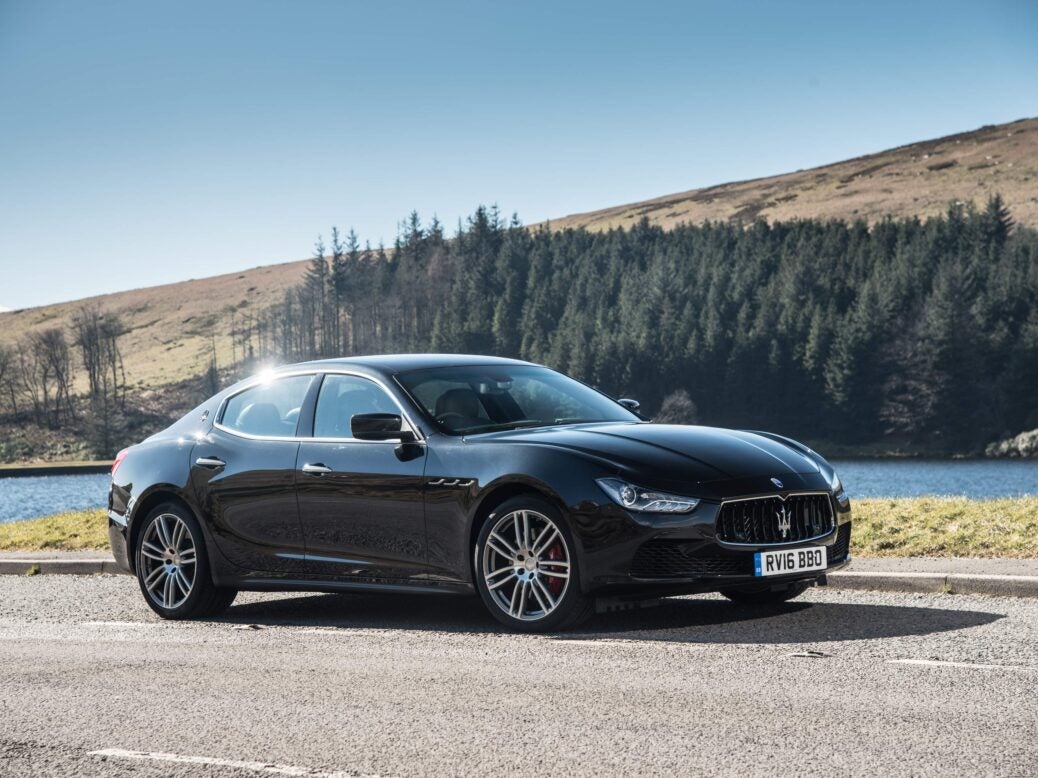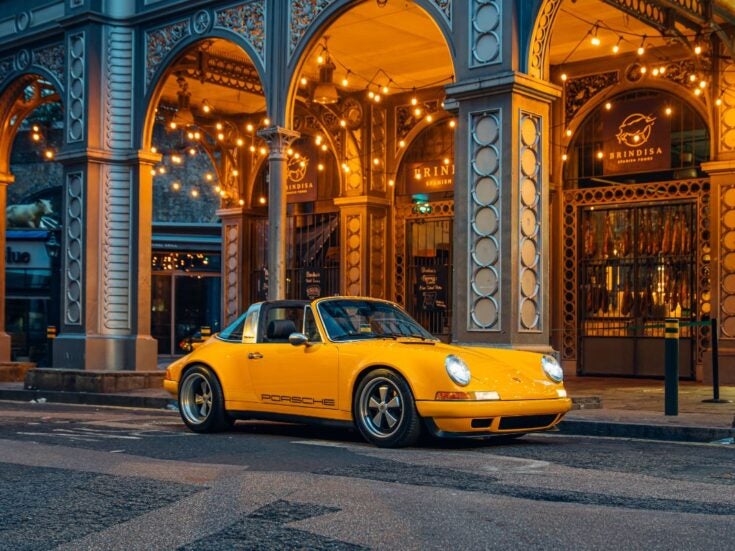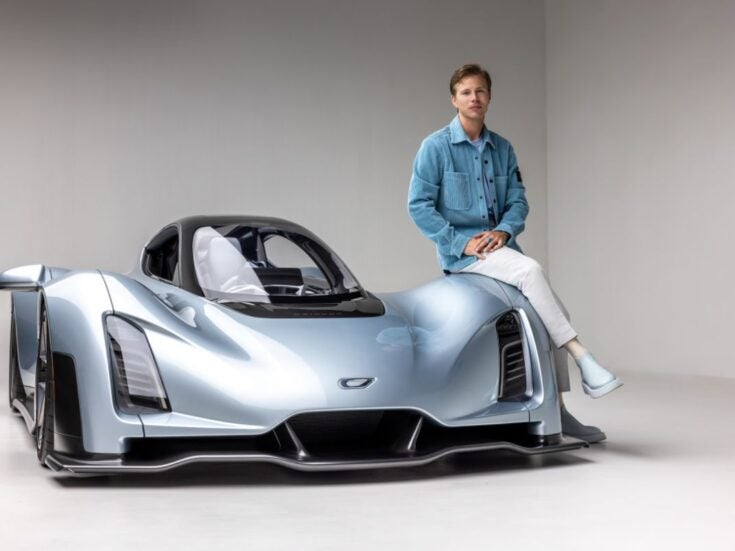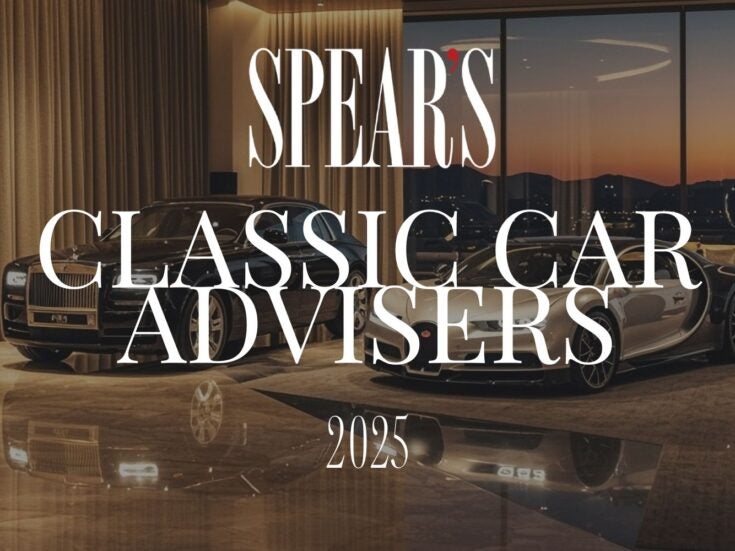
Maserati is making inroads into the executive saloon market with its Ghibli, writes Gareth Herincx
Few car makers can match the badge appeal of Maserati. With more than a century of rich road and motorsport heritage, the Italian marque is as much about luxury lifestyle as automotive excellence. Now part of the Italian-American giant Fiat Chrysler Automobiles (FCA), Maserati is a company with an ambitious plan to sell 50,000 cars a year. With a presence in 65 markets worldwide, the distinctive range consists of the GranTurismo, GranCabrio, Ghibli, Quattroporte and the new Levante — the company’s first SUV.
This Ghibli is the third Maserati to bear the name. The first, a two-seater grand tourer, was launched in 1967. The second, a two-door, four-seater coupé, followed in 1992. (In case you’re wondering, the name ‘Ghibli’ originates from the dry, dust-bearing desert wind descending from deepest Libya towards the Mediterranean Sea in late spring/early summer.)
In terms of size, the new Ghibli sits in the executive sector and it has some formidable rivals including the BMW 5-Series, Mercedes-Benz E-Class and Audi A6. It could be argued that there the comparisons should end, because the Maserati is a thoroughbred, a class apart from the Teutonic trio. In the real world, the Ghibli must grab sales where it can, and with a starting price of £49,860 it has a broad appeal.
The Ghibli is available with three engines — two 3.0-litre twin turbo V6 petrol units delivering either 350hp or 410hp, plus a more frugal 3.0-litre V6 turbo diesel that produces 275hp. I tested the range-topping Ghibli S with the more powerful of the Ferrari-derived engines. Yes, that’s right. The glorious-sounding V6 under the bonnet is assembled in Modena by Ferrari.
Starting at £64,510, my car came with optional extras, boosting the price to £79,372. The options included sexy red brake calipers (£432), a Harman Kardon premium sound system (£1,280), and Skyhook electronically variable active damping suspension system (£2,045).
The Ghibli has serious kerb appeal. Easily one of the most handsome sports saloons ever, its curves ooze sensuality and it is perfectly proportioned — from the long, low bonnet back along its flowing profile and muscular haunches, rounded off with a pert rear end. Maserati’s now signature snout features a huge concave grille and sports the famous Trident badge. Not everyone’s a fan of the front end, but for me it’s the perfect balance of power and aggression. The car’s resulting slippery shape has a low drag coefficient of just 0.31.
The interior doesn’t disappoint either. The ultra-comfortable seats have a retro look and feel about them and the leather seems a cut above, not just to the touch, but it smells good too. The driver’s seat has eight-way electric adjustment, no less.
Slip inside the swooping cockpit and the layout is uncluttered, attractive and well designed, if not state-of-the-art. The Trident badge sits proudly at the centre of the large three-spoke leather-clad steering wheel, while a traditional speedometer and rev counter dominate the instrument binnacle, just as they should. An 8.4in touchscreen in the centre console controls the main functions including satnav, media and connectivity. In a nod to the past, an oval analogue Maserati clock with blue face and aluminium details tops the centre of the dashboard, just above the touchscreen. The rear seats are just as comfy, though legroom is not class-leading. The boot, however, is a cavernous 500 litres — even bigger if the 60/40 rear seats are folded down.
Press the start button and two things happen. Your seat automatically slides into position behind the wheel (a memory function enables you to save your preferred seat, lumbar and mirror settings) and the engine fires up. As you’d expect with a Maserati, there’s a sense of occasion here too. It growls and there’s more than a little menace.
Drive away and the power available is immediately obvious. Capable of reaching 62mph in just five seconds and a top speed of 177mph, the Ghibli is a pussycat at low speeds, but press on and the engine note becomes more aggressive, while the changes from the ZF eight-speed automatic box kick in with military precision. Tap the sport button by the gear selector and the car is transformed into a snarling beast, ease off and the delicious down-changes are accompanied by intoxicating crackles from the four exhausts at the back. My test car also came with optional steering wheel paddles, should you fancy changing gear yourself.
Power delivery is smooth and progress is exhilarating. The Ghibli’s ride is on the firm side, but it’s easy to see why when tackling flowing country roads, where body lean is well controlled and it feels balanced. Needless to say, activate the cruise control on motorways and it becomes an effortless cruiser. Don’t be lulled into a false sense of security, though — in wet and colder conditions it should be treated with respect, because with all that power on tap, the rear wheels can struggle for traction. That’s not to say the Ghibli is unsafe — quite the contrary. Indeed, it gained a maximum five-star rating in Euro NCAP crash safety tests. The big Brembo brakes deserve a special mention too — hardcore stopping power.
All that performance comes at a price. The Ghibli S is capable of 29mpg but is likely to return closer to 20-25mpg in the real world, which is why the diesel version might make more sense for some. It’s still good for 155mph and a 0-62mph dash in 6.3 seconds, and it claims fuel economy of up to 48mpg.
Of course, no car is perfect and the Ghibli has a few imperfections. There’s just one steering wheel stalk combining the windscreen wiper and lighting functionality, which can lead to confusion. The pedals are slightly offset to the right — you soon get used to it, but it’s slightly disconcerting initially. The parking sensors are a little too sensitive, resulting in bleeper overload. And while the build quality is good, there are a few too many plastics on show in the cabin.
Despite that, all is forgiven because the Ghibli isn’t just eye candy — it’s a slice of surprisingly practical exotica which reminds you that driving can be a thrilling and challenging experience. And above all, it makes you and your passengers feel special.






